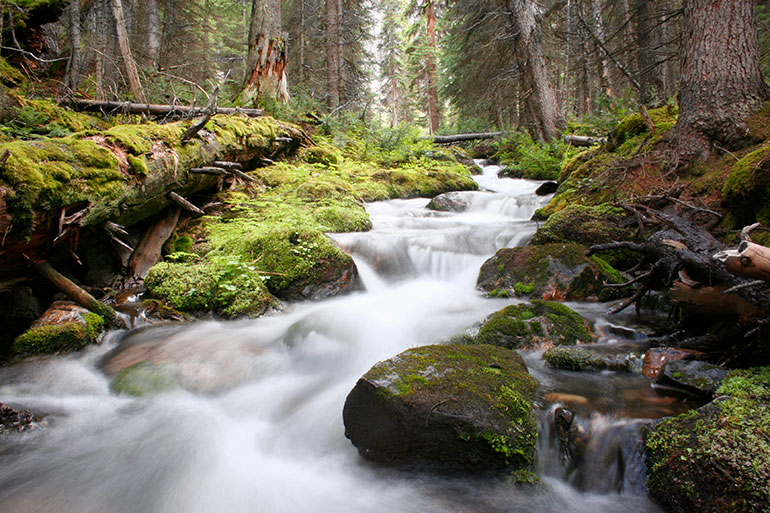
Acting as natural reservoirs, forests in watersheds release and purify water by slowing erosion and delaying its release into streams.
Human and natural changes to forests impacting natural filtration system
As World Water Day is observed around the globe, new research from UBC Okanagan suggests a systematic approach to forest and water supply research may yield an improved assessment and understanding of connections between the two.
Healthy forests play a vital role in providing a clean, stable water supply, says eco-hydrologist Dr. Adam Wei.
Acting as natural reservoirs, forests in watersheds release and purify water by slowing erosion and delaying its release into streams. But forests are changing—in part because of human activity—and that’s having an impact on forests’ interaction with hydrological processes.
Dr. Wei, Forest Renewal BC’s chair of watershed research and management, is a professor of earth, environmental and geographic sciences in the Irving K. Barber Faculty of Science, and study co-author.
He says activities like logging, deforestation, creating new forests on previously bare land, agriculture and urbanization are changing the landscape of forests worldwide.

Dr. Adam Wei, professor of earth, environmental and geographic sciences, visits the Williston Reservoir near Fort St. John, BC.
“The notion that humans have left enormous, often negative, footprints on the natural world isn’t new,” he says. “It’s why the term Anthropocene was created, to describe these phenomena. But now we need to acknowledge where we’re at and figure out a way to fix what’s broken.”
While humans bear much of the blame, they aren’t the only culprits.
Natural disturbances like insect infestations and wildfires are also contributing to the swift transformation of forests, leading Dr. Wei to examine current forest-water research and management practices. His goal is to identify the gaps and propose a new approach that reflects numerous variables and their interactions that may be at play at any given watershed.
He points to an example in the study to illustrate the need for a new perspective.
“We were looking at the impacts of deforestation on annual streamflow—and though we were able to draw the conclusion that deforestation increased it, the variations between studies were large, with increases between less than one per cent to nearly 600 per cent,” he explains.
Dr. Wei saw similar variations when he researched the ‘why.’
“We concluded this was due to when water in the soil and on plants evaporates due to a loss of forest cover,” explains Wei. “But the amount lost ranged from less than two per cent to 100 per cent—that’s a huge difference that can be attributed to scale, type and severity of forest disturbance, as well as climate and location of watershed properties. There are so many variables that need to be taken into account, and not doing so can result in contradictory research conclusions.”
To limit disparities, Dr. Wei says future research and watershed management approaches need to be systematic, include key contributing factors and a broad spectrum of response variables related to hydrological services.
He also suggests new tools like machine learning and climatic eco-hydrological modelling should be utilized.
“Implementing a systematic approach to all forest-water research will reduce the likelihood of procuring misleading assessment, which in turn will give us a better chance to solve some of the problems we’ve created,” says Dr. Wei.
This study, published in Science, was conducted by Dr. Wei, and his then-graduate student Dr. Mingfang Zhang, with support from the China National Science Foundation.
About UBC’s Okanagan campus
UBC’s Okanagan campus is an innovative hub for research and learning founded in 2005 in partnership with local Indigenous peoples, the Syilx Okanagan Nation, in whose territory the campus resides. As part of UBC—ranked among the world’s top 20 public universities—the Okanagan campus combines a globally recognized UBC education with a tight-knit and entrepreneurial community that welcomes students and faculty from around the world in British Columbia’s stunning Okanagan Valley.
To find out more, visit: ok.ubc.ca